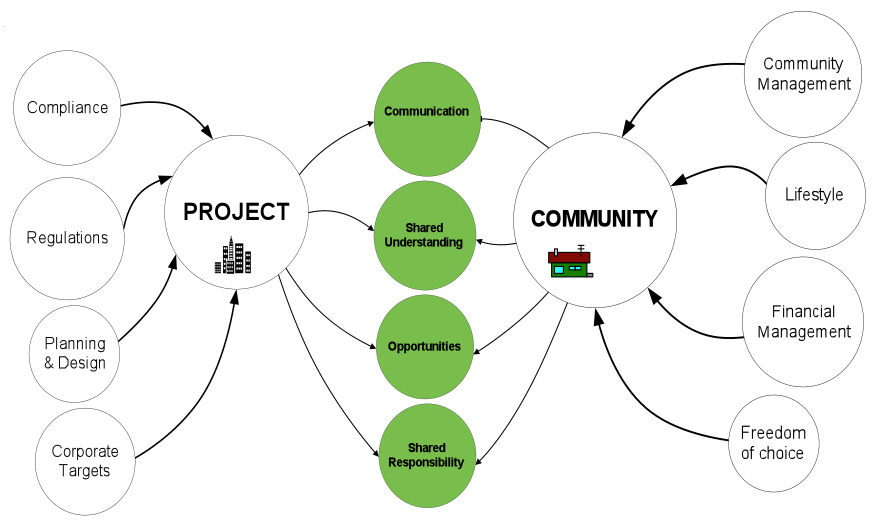Project: Horizon Power
Upgrading power supplies is the bread and butter of companies such as Horizon Power, a fully-integrated Western Australian government-owned business delivering energy solutions in regional Western Australia.
However when the service being delivered is to remote and often isolated parts of the country, the project management approach used requires innovation and above all must be instilled with cultural understanding and awareness to ensure effectiveness.
What drives the project management approach to regularising supplies in these communities is Horizon Power’s business strategy which gives equal weight to the delivery of reliable, safe and affordable power supplies as it does to the protection of the environment and cultural heritage and to adding value to communities we service by delivering lasting social benefit.
What is unique to Horizon Power’s project management methodology in the regularisation of power supplies in Aboriginal communities is the commitment to respectful engagement and open communication both during and after the project, rather than just entering a community, doing the work, packing up the tools and leaving behind little more than a more efficient network and some tyre tracks.
Government objectives and stakeholder needs and wants
Horizon Power receives funding from Federal and State Government agencies to regularise power supplies in remote and isolated Aboriginal communities through different projects such as the ‘Aboriginal Remote Communities Power Supply Project’ (ARCPSP), and the ‘Town Reserves Regularisation Project’ (TRRP). In addition, the Federal Government contracts Horizon Power to coordinate and manage community upgrades and metering projects through Horizon Metering Services throughout Western Australia.
Horizon Power has been working on regularisation work programs in 33 remote communities throughout Western Australia. The regularisation works includes building new power stations and networks to be completed while existing infrastructure remains operational. Working in brownfield sites produces a new suite of complexities that overlay existing challenges when working in isolated regions with limited resources.
Through specialised funding, these programs have enabled Horizon Power’s ability to design new facilities that will regularise currently outdated infrastructure to ensure that the new systems will have the capacity to maintain standards of supply, reliability and affordable power supplies to remote and town-based Aboriginal communities to a standard that would be expected in a comparable sized mainstream town.
The objectives of government through the ARCPSP and TRRP programs are similar and stem from a number of reports, for example the Gordon and Hames Reports, which focus on:
- Empowerment and self management by Indigenous peoples;
- Economic independence and equity in a manner consistent with Indigenous social and cultural values;
- The need to negotiate with and maximise participation by Indigenous people through their representative bodies;
- Increased clarity with respect to the roles and responsibilities of the various spheres of government; and
- The same right of access to mainstream services for Indigenous people as other Australian citizens living in similar geographical circumstances.
Through integration with project stakeholders and communities, the project facilitated the successful delivery of these government objectives. The key to the success of meeting joint targets is ‘seeking to understand’ through consultation and engagement, ensuring all parties have a clear idea of each objective and its impacts on one another.
It is essential to integrate government objectives and community needs. The project integration model Caskel allowed a clear picture of how all these objectives can come into play to enable a successful outcome for the project sponsor (the government), Horizon Power (the project team) and the end user (the community and its residents).

Identifying the issues
To take a step back, what clearly must be understood at the conceptual stage of the project is that regularising the electricity supply in remote isolated communities is not the same as upgrading a section of a distribution line in any city or town across Western Australia.
Due to their environmental isolation, communities have limited resources to aid in the provision of services for the community. Some communities have limited access to mail and internet. There are language barriers, and cultural differences. Much of Aboriginal history is an oral history taped by historians. To put an advert in the paper for notification of major works, as is normal practice, would not be as effective in some Aboriginal communities. These aspects have to be considered prior to the project beginning to ensure an appropriate strategy for implementation.
The challenge both project teams faced was operating power supplies from historic facilities that were not constructed to today’s standard, while regularising or building a new facility utilising current design, safety specifications with new technology ensuring a reliable power supply that Horizon Power will own and maintain. In the ARCSPS case, this also can include operating the current power station while building a new one in a different location.
ARCPSP and TRRP communities have pre-payment meters installed on all residential properties within the community; and for TRRP communities the pre-payment meters replace a master electricity meter. Previously, managers of communities were required to pay one power bill for the entire community’s power consumption or, as in the case of ARCPSP communities, community management was expected to pay for the diesel used at their local power station.
Power bills relied upon ad-hoc ‘chuck in’ system, whereby various methods of payment, either through rent or welfare entitlement deductions or through voluntary contribution by community residents to the community bill were used by management to recoup costs.
Pre-payment meters have relieved pressure on sparse community management financial resources. It has also led to an environment in which there are now incentives to save power as each house is responsible for using and paying for their own electricity. For TRRP communities, non-payment of power bills could lead to the entire community being disconnected, including those that contributed to the payment. Pre-payment meters avoid this situation.

